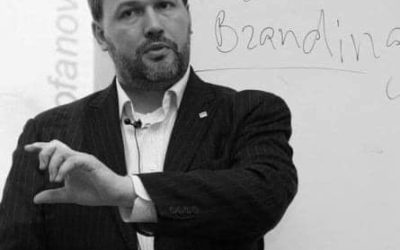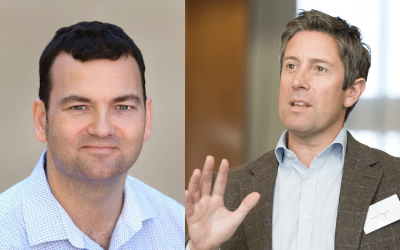Much has been written about the need for enterprise transformation and the obstacles that leaders invariably face. Many look for the One Best Way (a la Frederick Taylor) to achieve transformations, but the awkward truth is that leaders always have to make trade-offs along the way. Organizational transformation is, therefore, as much an art (or a craft) as a science. Studying the craft of practitioners – leaders in the trenches doing the work – informs the science, which in turn, hopefully, aids organizations as they change. In this article, we review some critical decisions leaders must make and discuss factors we think worthy of their consideration.
Leaders must determine how far and fast they need to go when envisioning a transformation. Many factors influence the level of ambition, including the degree of competitive pressure in the industry, the company’s financial performance, and the future outlook for operating expenses and customer demand. If the motivation is to improve volume and profitability for an existing business model, the “transformation” is really just an ongoing business modernization. A higher ambition level is required if the objective is to develop more scalable and capital-efficient business models, which may require changes in culture, structure, and strategy. Our focus here is primarily on the latter scenario.
Going further and faster can lead to improved competitive advantage, but in enterprise transformation, as in all things in life, there is no free lunch. The strategy of an enterprise is often multi-faceted, with a broad portfolio of initiatives. Allocating more resources for some might mean allocating less for others. The executive team and the board must consider whether to cut expenditures elsewhere, use external financing, or live with lower operating margins until the transformation pays off.
Investor Relations must be considered in some cases – how does one explain the effort to shareholders and prospective shareholders? New business models, for instance, may directly impact analysts’ assessments of public companies, so crafting the story must be done with care.
The technological aspects of a transformation also require several trade-offs, including :
- improving legacy systems versus deploying new applications
- leading-edge technologies versus “proven” approaches
- building versus buying for new applications
Reducing the time to deployment is often critical, but pure off-the-shelf solutions may not yield sufficient competitive advantage. Developing custom software may not be enough either, especially when the data accumulated in an enterprise won’t be there overnight.
In a fascinating podcast interview with Decoder, Rent the Runway’s CEO, Jennifer Hyman, described how gathering data from millions of fashion rentals allowed the company to reuse garments more times, an achievement critical to profitability in a subscription-based business model. It was only possible because millions of transactions had occurred, with data that could be analyzed. The data aspect of enterprise transformation may be custom enough that it must be built – or earned – for that enterprise specifically.
Enterprises are socio-technical systems. Their technology components are inherently linked to the people who develop, deploy, and interact with them. Transformations, therefore, entail many people-related trade-offs, including:
- developing people versus hiring new talent
- making innovation everyone’s business versus using special innovation teams (e.g., “black belts”)
- productivity improvement versus wholesale automation
- changing the culture versus adapting to the people you have
- long-term employment versus short-term and loosely coupled relationship
The traditional Lean Enterprise school regards innovation as everyone’s business and technology as means of empowering people rather than replacing them. It expects leaders to focus on developing people over the long term. Ideally, the time horizon for developing people aligns with the strategy pursued by the enterprise. Such an approach no longer works as well when an industry is disrupted via a new technology platform that is much less people-intensive. This is the dilemma faced by traditional banks as they encounter FinTech startups.
At the same time, a McKinsey report released on July 13, 2022, cited lack of career development and advancement as the top reason for employees leaving. There is little doubt that leadership teams that are too cautious risk losing A-players in critical areas such as Artificial Intelligence.
Enterprises have long used M&A as a tool for remaking themselves, and over the last few years, corporate venturing has also emerged as a trend. The motivation for the latter is usually not purely financial; it is also to build a closer relationship with startups and get early access to their technologies. A complementary approach is to open more internal R&D centers and incubators, seeking to develop new startups from within.
Before Covid-19, enterprises focused their talent recruitment and venture investing efforts on major technology hubs or in proximity to existing office locations. The pandemic changed the landscape, however. Talent is now more widely dispersed, and hybrid work is here to stay. Leaders must strike a balance between geographical focus and working with talent where they are.
On July 21, 2022, Andreessen Horowitz announced that it would no longer regard its Sand Hill Road office in Menlo Park, California, as its headquarters. Instead, they declared that their headquarters was “in the cloud” and that they would open local offices in Miami, New York, and Santa Monica. Co-founder Ben Horowitz explained in a blog post that the pandemic had weakened the (centralizing) Silicon Valley network defect. In other words, the response to the decentralization of the talent base was the decentralization of office locations. Even here, however, leaders face a trade-off – how many new offices should they open? Not all industries are as mobile as software, and new offices may be costly.
No matter the geographical location of the workforce, if the transformation is to feel meaningful to people, leaders must involve them. Leaders must decide on the degree of employee involvement and on what decision rights they wish to grant. If employees have too much decision-making power, there is a risk that the transformation is either too timid or that it becomes reckless. Creativity is desirable, but so is organizational alignment.
People need a sense of purpose and context in their work. When an organization undergoes a profound change, its mission may change, and the desired mindset and behaviors of employees might also need to change. People have a certain degree of flexibility concerning their purpose, mindset, and behaviors, but it is finite. The more drastic the desired changes in an organization’s culture, the more likely leaders will have to go outside for the people they need to replace those who are no longer compatible.
As organizations transform on the inside, they must also do so on the outside. The brand that represents the organization today may become unsuitable, in which case a rebranding effort may need to be part of the transformation. It is not uncommon for a large enterprise to develop portfolios of brands as they grow, either organically or through acquisitions.
Finally, we would be remiss if we did not mention that in large organizations, the answer to each of the dilemmas discussed here may legitimately be different for different parts of the enterprise. Even within one company, therefore, there may not be One Best Way. Instead, leadership teams must often grapple with a set of fluid considerations that change over time.










